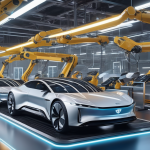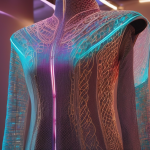How Neuromorphic Computing Could Change AI as We Know It

Imagine a world where artificial intelligence (AI) operates with the same efficiency and adaptability as the human brain. This is not just a distant dream; it’s the promise of neuromorphic computing. By mimicking the neural architecture of our brains, neuromorphic systems are set to revolutionize how we process information and make decisions. The potential impact on AI is profound, as these systems can process data in ways that traditional computing simply cannot match.
At its core, neuromorphic computing is about creating brain-like architectures that can learn and adapt in real-time. Traditional computers operate in a linear fashion, processing information sequentially, which can be a bottleneck in complex tasks. In contrast, neuromorphic systems utilize a network of artificial neurons that communicate in parallel, much like how our brain cells interact. This allows for more efficient data handling and quicker response times, making it a game-changer for AI applications.
But what does this mean for the future? For starters, neuromorphic computing could lead to significant advancements in areas like robotics and autonomous systems. Imagine robots that can learn from their environments and make decisions on the fly, much like a human would. This level of adaptability could drastically improve their performance in various settings, from manufacturing to healthcare.
Moreover, the energy efficiency of neuromorphic systems is another compelling benefit. Traditional AI models often require massive amounts of power, especially when dealing with large datasets. In contrast, neuromorphic computing operates with low power consumption, which not only reduces operational costs but also makes it viable for use in mobile devices. Think about the implications: smartphones that can process complex tasks without draining the battery. This could lead to a new era of smart devices that are not just powerful but also sustainable.
As we stand on the brink of this technological revolution, the integration of neuromorphic computing into our daily lives seems inevitable. It’s not just about enhancing AI; it’s about transforming our entire approach to technology. The future is bright, and with neuromorphic computing, we are stepping into a realm where machines can learn, adapt, and evolve just like us.
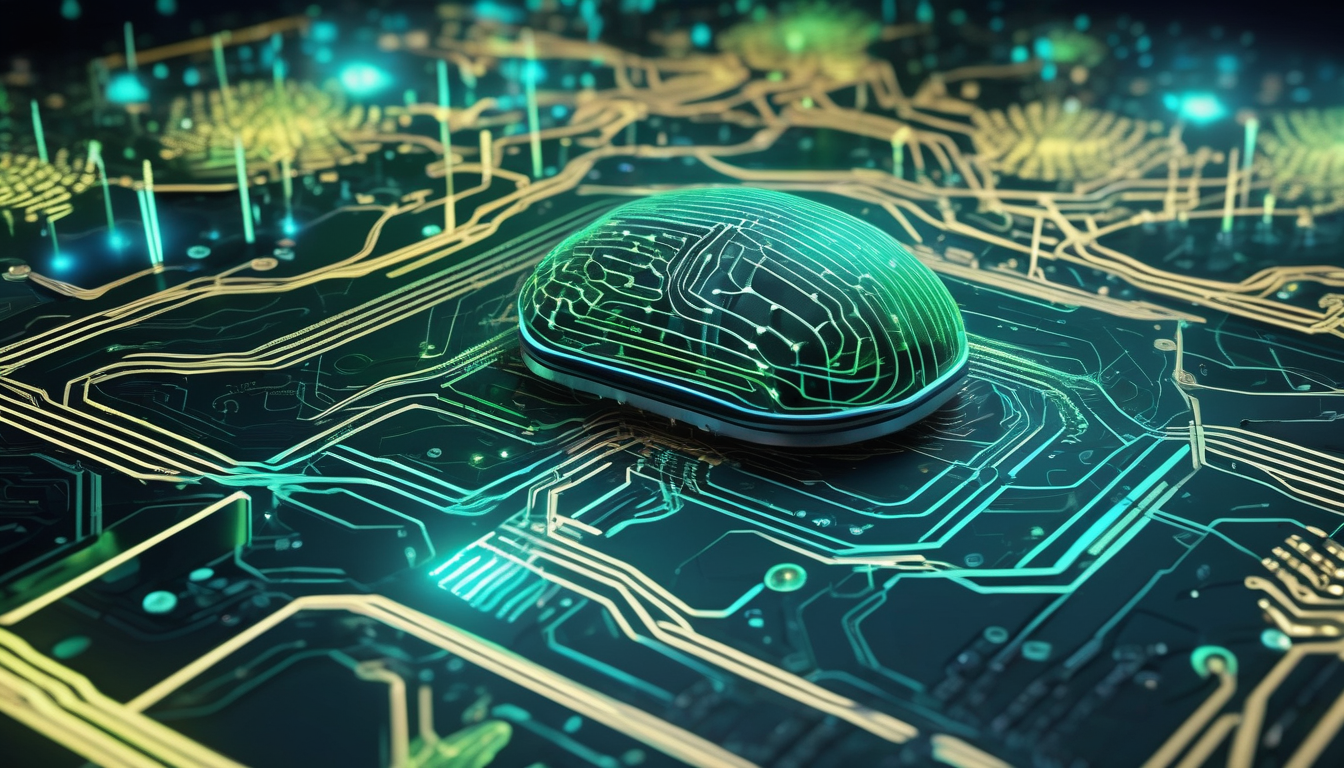
Understanding Neuromorphic Computing
Neuromorphic computing is an exciting frontier in the world of technology, designed to mimic the intricate neural structures of the human brain. Imagine a computer that thinks and processes information similarly to how we do—this is the essence of neuromorphic computing. Unlike traditional computing architectures that rely heavily on binary logic and linear processing, neuromorphic systems utilize a network of artificial neurons and synapses to achieve a more dynamic and efficient form of data processing.
At its core, neuromorphic computing operates on principles derived from neuroscience. This means that instead of just crunching numbers, these systems can recognize patterns, learn from experiences, and adapt to new situations in real-time. Think of it as training a puppy: the more you interact and engage, the smarter and more responsive it becomes. Similarly, neuromorphic systems learn and evolve through exposure to data, making them inherently more versatile than their traditional counterparts.
One of the key distinctions between neuromorphic and conventional computing lies in how they handle information. Traditional systems process data in a sequential manner, often leading to bottlenecks when faced with large volumes of information. In contrast, neuromorphic systems operate in a parallel fashion, allowing them to process multiple streams of data simultaneously. This capability not only speeds up processing times but also enhances the system’s ability to make decisions based on real-time input.
In addition to mimicking biological processes, neuromorphic computing also prioritizes energy efficiency. Traditional computing can be power-hungry, consuming vast amounts of energy for routine tasks. Neuromorphic systems, however, are designed to operate on low power, making them particularly suitable for applications where energy conservation is paramount, such as in mobile devices and IoT (Internet of Things) technologies. This efficiency opens up a world of possibilities, allowing for more sustainable and portable computing solutions.
In summary, understanding neuromorphic computing requires a shift in perspective from conventional computing paradigms. By embracing the brain-inspired architecture, we can unlock new potentials in artificial intelligence, leading to smarter, more efficient systems that can revolutionize everything from mobile devices to advanced robotics.
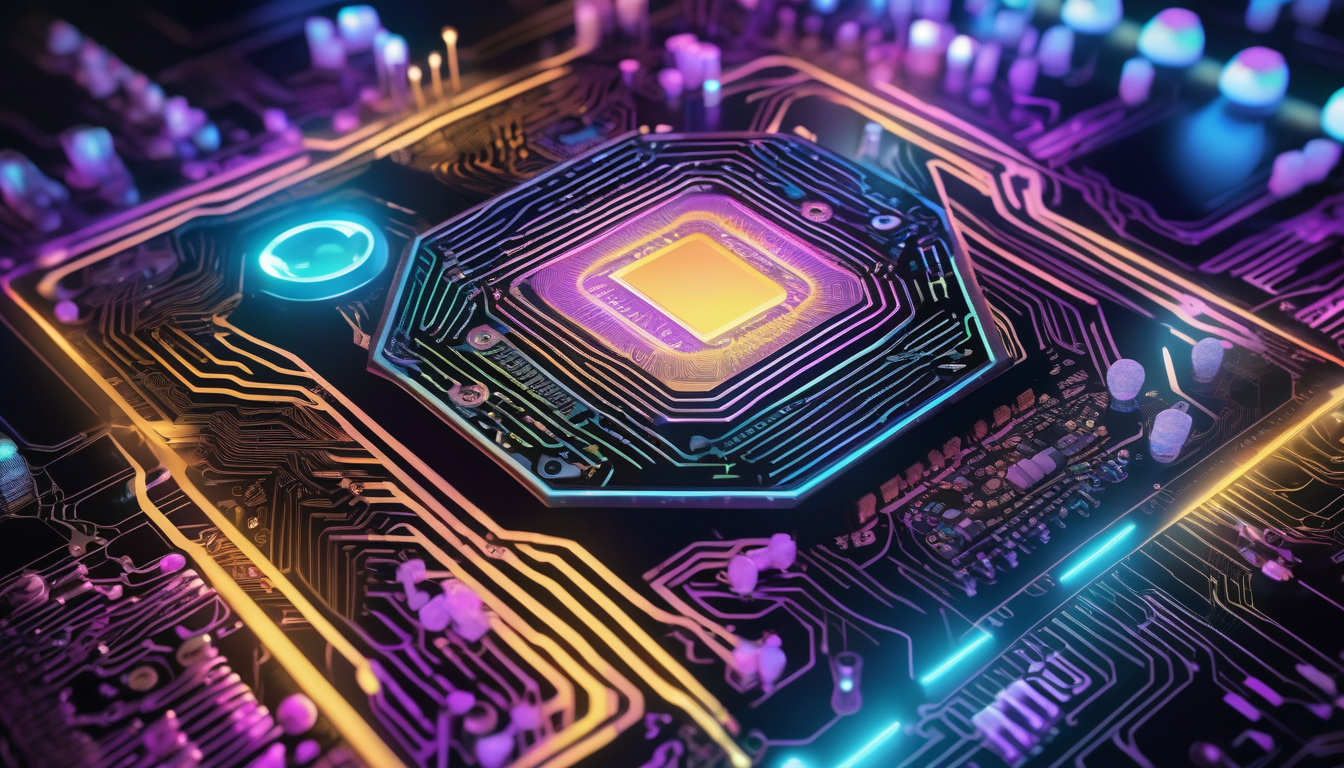
Key Advantages of Neuromorphic Systems
When we think about the future of artificial intelligence, neuromorphic systems stand out like a beacon of hope, offering a fresh perspective on how we can process information. These innovative systems are designed to mimic the way our brain operates, which opens up a whole new world of possibilities. Imagine a computer that can learn and adapt just like you do! This is one of the most exciting aspects of neuromorphic computing.
One of the standout features of these systems is their energy efficiency. Traditional computing systems can be power-hungry, often requiring significant energy to perform complex tasks. In contrast, neuromorphic systems use spiking neural networks that only activate when necessary. This not only conserves energy but also allows for faster processing speeds. To put it simply, it’s like having a car that only uses fuel when it’s actually moving, rather than idling in your driveway.
Moreover, the real-time processing capabilities of neuromorphic systems are nothing short of revolutionary. They excel in environments where immediate responses are crucial, such as in autonomous vehicles or robotic systems. Picture this: a self-driving car that can instantly react to changes in its environment, making split-second decisions that could save lives. This level of responsiveness can transform industries, making them safer and more efficient.
Let’s not forget about the potential impact on mobile devices. With neuromorphic computing, our smartphones could become smarter, processing information more efficiently while consuming less battery life. This means longer usage times and enhanced functionalities that we can only dream of today. Imagine your phone being able to recognize your voice and preferences in real-time, making your interactions seamless!
In summary, the key advantages of neuromorphic systems include:
- Energy Efficiency: Reduced power consumption leads to longer-lasting devices.
- Real-Time Processing: Instantaneous responses for critical applications.
- Enhanced Mobile Capabilities: Smarter, more efficient mobile devices.
As we continue to explore these advantages, it’s clear that neuromorphic computing has the potential to redefine not just AI, but the entire technological landscape.
Energy Efficiency
One of the standout features of neuromorphic computing is its remarkable energy efficiency. Unlike traditional computing systems that often require vast amounts of power to perform complex calculations, neuromorphic systems emulate the brain’s architecture, processing information in a way that consumes significantly less energy. Imagine a light bulb that shines just as brightly as a spotlight but uses only a fraction of the electricity. That’s the kind of efficiency neuromorphic computing brings to the table.
This energy efficiency is achieved primarily through its unique architecture, which allows for parallel processing and event-driven computation. In simpler terms, instead of processing every piece of data continuously, neuromorphic systems only react to changes in the data, much like how our brains respond to stimuli. This not only reduces power consumption but also enhances the speed of data processing. But why does this matter? In the era of AI, where rapid data analysis is crucial, being able to do more with less energy could lead to groundbreaking advancements.
To illustrate the impact of energy efficiency in neuromorphic computing, consider the following comparison:
| Feature | Traditional Computing | Neuromorphic Computing |
|---|---|---|
| Power Consumption | High | Low |
| Processing Style | Sequential | Parallel/Event-driven |
| Speed of Data Processing | Moderate | High |
This table shows just how transformative neuromorphic computing could be. The low power consumption and high processing speed make it an ideal candidate for various applications, especially in domains where energy resources are limited, such as mobile devices and remote sensors.
Furthermore, the implications of this energy efficiency extend beyond just performance. With the growing concerns about environmental sustainability, leveraging neuromorphic computing could significantly reduce the carbon footprint associated with AI technologies. It’s like turning a gas-guzzler into a hybrid – not only do you save on fuel, but you also contribute to a cleaner planet.
In conclusion, the energy efficiency of neuromorphic computing is not just a technical advantage; it’s a game changer that could redefine how we approach AI development. As we continue to explore its potential, we may find that the future of technology is not only smarter but also greener.
Impact on Mobile Devices
Imagine holding a smartphone that thinks and reacts like your own brain. Neuromorphic computing is on the brink of making this a reality, transforming mobile devices into smart companions that can process information with incredible speed and efficiency. With its brain-like architecture, neuromorphic computing allows smartphones to perform complex tasks without draining your battery. This means you can enjoy real-time processing for applications like augmented reality and advanced gaming, all while keeping your device lightweight and energy-efficient.
One of the most exciting aspects of integrating neuromorphic systems into mobile devices is the potential for enhanced user experiences. For instance, consider how your phone could adapt its features based on your habits. Imagine a device that learns when you typically check your messages and pre-loads them for instant access. This type of personalization is not just a dream; it could be a standard feature in the near future.
Furthermore, the implications extend beyond mere convenience. With neuromorphic computing, mobile devices could revolutionize health monitoring applications. Think about wearable technology that continuously analyzes your vitals and alerts you to potential health issues before they escalate. This is not just about having cool gadgets; it’s about empowering users to take control of their health in a proactive manner.
To illustrate the potential advancements, let’s look at a few key areas where neuromorphic computing could make a splash:
- Battery Life: Devices could last significantly longer, as neuromorphic chips consume far less energy compared to traditional processors.
- Speed: Real-time data processing could enable instant responses in applications such as navigation and gaming.
- Intelligent Assistance: Imagine a voice assistant that understands context and nuances, making conversations feel more natural.
As we stand on the threshold of this technological shift, it’s clear that neuromorphic computing has the potential to redefine how we interact with our mobile devices. The future is bright, and we might soon find ourselves living in a world where our smartphones not only serve us but also understand us.
Applications in Robotics
Neuromorphic computing is set to revolutionize the field of robotics in ways we can only begin to imagine. By mimicking the way our brains process information, these systems can enhance robotic capabilities, making them more adaptable and intelligent. Picture a robot that learns from its environment in real-time, adjusting its actions based on sensory input just like we do. This opens up a world of possibilities!
One of the most exciting applications of neuromorphic computing in robotics is in autonomous navigation. Traditional robotic systems often rely on pre-programmed paths and rigid decision-making algorithms. In contrast, neuromorphic systems can process sensory data from cameras and sensors instantaneously, allowing robots to navigate complex environments dynamically. For instance, a delivery drone could avoid obstacles and adapt its flight path on the fly, ensuring efficient and safe delivery.
Moreover, the ability to process data in real-time means that robots can engage in complex tasks that require quick decision-making. Consider the realm of search and rescue operations. Robots equipped with neuromorphic chips could analyze their surroundings, recognize human voices, and even identify signs of life amidst rubble, all while making split-second decisions. This capability could significantly enhance rescue missions, saving lives when every second counts.
Additionally, neuromorphic computing enables robots to learn from experience. Imagine a factory robot that improves its assembly line efficiency over time, learning the most effective methods through trial and error. This not only boosts productivity but also reduces the need for constant human oversight. The potential for continuous learning means that robots can become more skilled and efficient, making them invaluable assets in various industries.
As we look to the future, the integration of neuromorphic computing in robotics is not just a trend; it’s a paradigm shift. The robots of tomorrow will not only perform tasks but will also understand and adapt to their environments in ways we once thought were exclusive to humans. The implications for industries such as manufacturing, healthcare, and logistics are staggering, paving the way for a new era of intelligent machines.
Real-Time Processing Capabilities
Imagine a world where machines can think and react as quickly as we do. of neuromorphic computing are paving the way for this exciting future! Unlike traditional computing systems that rely on sequential processing, neuromorphic systems operate in a parallel fashion, mimicking the brain’s neural architecture. This allows them to process vast amounts of data instantly, making them ideal for applications that require immediate responses.
For instance, consider autonomous vehicles. These vehicles need to analyze their surroundings continuously and make split-second decisions to ensure safety. With the ability to process sensory data in real-time, neuromorphic systems can quickly identify obstacles, recognize traffic signals, and react to sudden changes in the environment. This capability not only enhances safety but also improves the overall driving experience.
Moreover, the implications of real-time processing extend beyond just transportation. In healthcare, neuromorphic computing can revolutionize patient monitoring systems. Imagine a system that can instantly analyze vital signs and alert medical personnel to any irregularities. The potential for life-saving interventions is enormous. Here’s a quick look at some fields that can benefit from these capabilities:
- Smart Cities: Real-time data processing can optimize traffic flow, reduce energy consumption, and enhance public safety.
- Industrial Automation: Machines can respond to changes in production lines instantaneously, improving efficiency and reducing downtime.
- Augmented Reality: Neuromorphic systems can enhance user experiences by processing visual data in real-time, creating seamless interactions.
As we delve deeper into the potential of neuromorphic computing, it’s clear that its ability to process information in real-time is not just a technical advantage; it’s a game-changer. It opens up a realm of possibilities where machines can assist us in ways we’ve only dreamed of, making our lives easier and safer. The future is bright, and neuromorphic computing is at the forefront of this technological revolution!
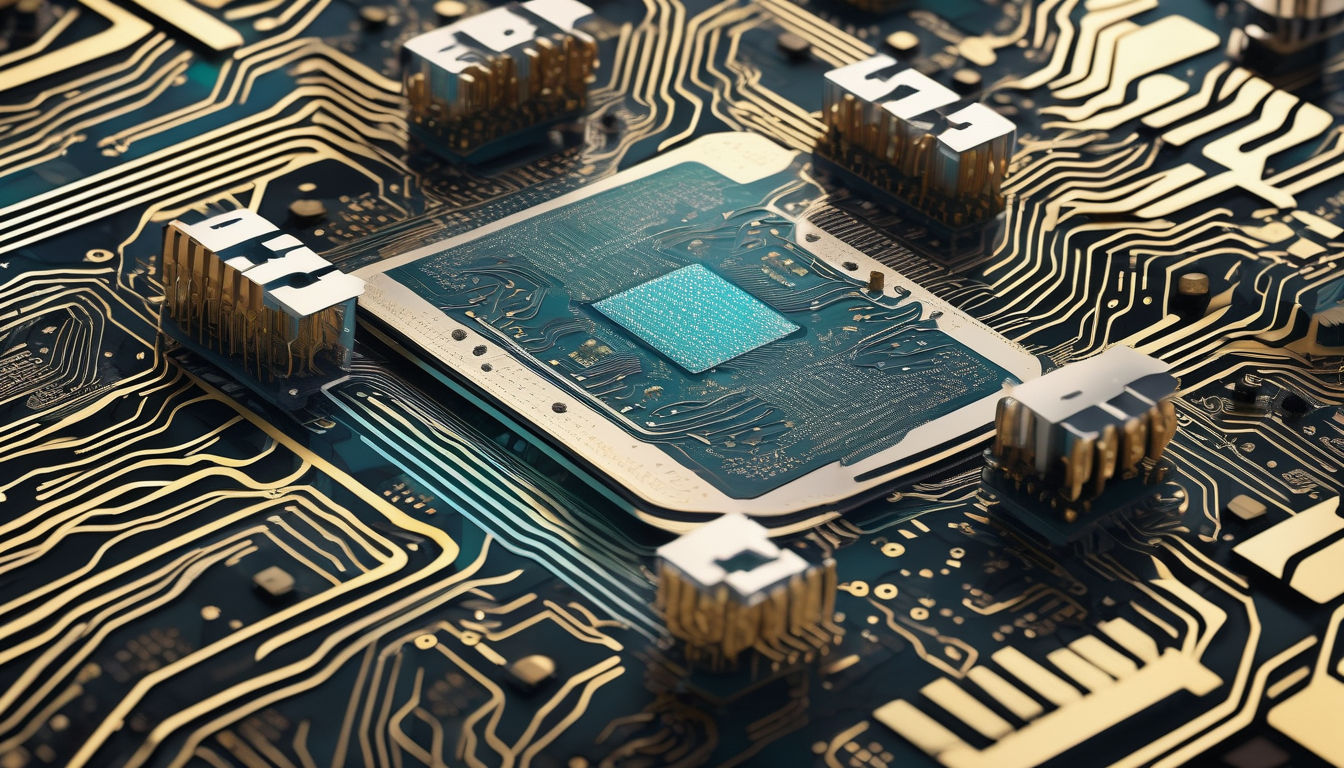
Challenges and Limitations
While the promise of neuromorphic computing is undeniably exciting, it’s essential to recognize that this innovative technology comes with its own set of challenges and limitations. One of the most pressing issues is scalability. As we aim to develop more sophisticated applications, the demand for processing power increases. However, scaling neuromorphic systems to meet these demands is not a straightforward task. Researchers are actively exploring various approaches to enhance scalability, yet significant hurdles remain.
Another critical challenge lies in the integration of neuromorphic computing with existing traditional AI frameworks. While both paradigms offer unique strengths, merging them can be tricky. For instance, traditional AI relies heavily on structured data and predefined algorithms, whereas neuromorphic systems thrive on unstructured data and dynamic learning processes. This fundamental difference can create friction when trying to combine the two technologies.
Moreover, the current hardware limitations of neuromorphic systems present significant obstacles. The materials and architectures used in these systems are still in the early stages of development. While prototypes have shown promise, achieving mass production with consistent performance is a challenge that needs to be addressed. Furthermore, the cost of developing and deploying neuromorphic chips can be prohibitive, particularly for smaller companies or startups.
To illustrate these challenges, consider the following table that summarizes the key issues facing neuromorphic computing:
| Challenge | Description |
|---|---|
| Scalability | Difficulty in expanding neuromorphic systems to handle increasing processing demands. |
| Integration | Challenges in merging neuromorphic computing with traditional AI frameworks. |
| Hardware Limitations | Current materials and designs are still evolving and may not be cost-effective. |
In conclusion, while neuromorphic computing has the potential to revolutionize the field of artificial intelligence, it is crucial to address these challenges head-on. By tackling scalability, integration, and hardware limitations, we can pave the way for a future where neuromorphic systems work seamlessly alongside traditional AI, unlocking new possibilities in technology.
Scalability Issues
As we dive deeper into the world of neuromorphic computing, one of the most pressing concerns that arises is scalability. While this innovative technology shows immense promise, scaling it to meet the ever-growing demands of modern applications is no small feat. Imagine trying to stretch a rubber band; at some point, it may snap if you pull too hard. Similarly, neuromorphic systems face challenges when it comes to expanding their capabilities without compromising performance.
One major hurdle is the inherent complexity of neuromorphic architectures. Unlike traditional computing systems, which rely on linear processing, neuromorphic systems operate on a more intricate network of interconnected nodes that emulate the brain’s neural structure. This means that as we aim to increase the number of neurons and synapses in these systems, we also introduce complications in terms of data management and processing efficiency. The more complex the system, the harder it becomes to maintain optimal performance.
Current research is focused on addressing these scalability issues through various strategies. For instance, researchers are exploring parallel processing techniques that allow multiple operations to occur simultaneously, thereby enhancing throughput. Additionally, advancements in materials science are paving the way for more efficient components that can handle the demands of neuromorphic systems. Below is a brief overview of some ongoing research efforts:
| Research Focus | Description |
|---|---|
| Parallel Processing | Developing methods to enable simultaneous data processing across multiple nodes. |
| Material Innovations | Creating new materials that can enhance the efficiency and speed of neuromorphic chips. |
| Algorithm Development | Designing algorithms specifically tailored for neuromorphic architectures to optimize performance. |
In addition to these research efforts, collaboration between academia and industry is crucial. By pooling resources and knowledge, stakeholders can develop more robust solutions to the scalability conundrum. The journey toward scalable neuromorphic computing may be fraught with challenges, but the potential rewards—such as improved AI capabilities and energy efficiency—make it a pursuit worth undertaking.
Integration with Traditional AI
Integrating neuromorphic computing with traditional AI frameworks is like adding a turbocharger to a sports car—it can significantly enhance performance but requires careful tuning. While traditional AI relies heavily on conventional computing architectures, neuromorphic systems mimic the way our brains process information, offering a unique approach to problem-solving. This synergy between the two paradigms opens up exciting possibilities for the future of technology.
One of the most compelling aspects of this integration is the potential for improved efficiency. Traditional AI systems often require substantial computational power and energy, leading to increased costs and environmental concerns. In contrast, neuromorphic computing operates on a fundamentally different level, utilizing low power consumption while maintaining high processing speeds. This means that when combined, we could see AI systems that not only perform better but also consume less energy.
However, the integration process isn’t without its challenges. One major hurdle is the compatibility between the two systems. Traditional AI algorithms are designed for linear processing, while neuromorphic systems thrive on parallel processing. This means that developers must innovate new algorithms that can leverage the strengths of both systems. Researchers are actively exploring this intersection, developing hybrid models that can seamlessly transition between traditional and neuromorphic methodologies.
Moreover, the integration could lead to significant advancements in various applications. For instance, in the field of autonomous vehicles, combining the real-time processing capabilities of neuromorphic systems with the vast data-handling capabilities of traditional AI could result in safer and more efficient navigation systems. Imagine a vehicle that can learn from its environment in real-time while making decisions based on vast amounts of historical data—this is the future that integration promises.
Ultimately, the successful melding of neuromorphic computing with traditional AI frameworks could pave the way for breakthroughs in numerous fields, including healthcare, finance, and robotics. As these technologies continue to evolve, we may find ourselves on the brink of a new era in artificial intelligence, one that is more intelligent, adaptable, and energy-efficient than ever before.
Frequently Asked Questions
- What is neuromorphic computing?
Neuromorphic computing is a type of computing that mimics the neural structure and functioning of the human brain. It processes information in a way similar to how our brain operates, allowing for more efficient data handling and decision-making.
- How does neuromorphic computing differ from traditional computing?
Traditional computing relies on a linear processing model, while neuromorphic computing operates in a parallel manner, similar to the brain’s neurons. This allows neuromorphic systems to handle complex tasks more efficiently and in real-time.
- What are the main advantages of neuromorphic systems?
Neuromorphic systems offer several key advantages, including:
- Energy efficiency: They consume less power, making them ideal for mobile and embedded devices.
- Real-time processing: They can process data instantly, which is crucial for applications like autonomous vehicles and robotics.
- How can neuromorphic computing impact mobile devices?
Integrating neuromorphic computing into mobile devices could significantly enhance their capabilities, enabling smarter applications that require less battery power while providing faster responses.
- What challenges does neuromorphic computing face?
Despite its potential, neuromorphic computing encounters challenges such as scalability and the integration with existing traditional AI systems. Ongoing research aims to address these issues and improve the technology’s viability.
- Can neuromorphic computing work alongside traditional AI?
Yes! Neuromorphic computing and traditional AI can coexist and complement each other. By integrating the strengths of both paradigms, we can create more robust and efficient AI systems.



